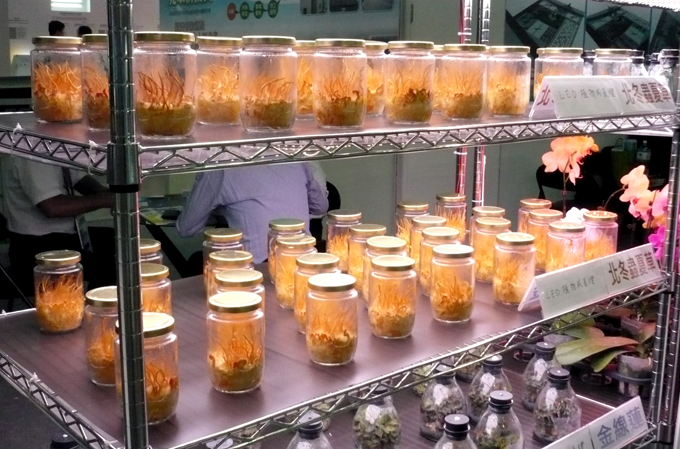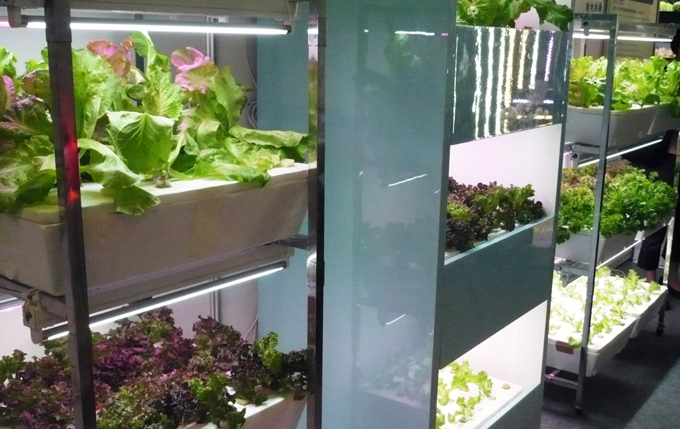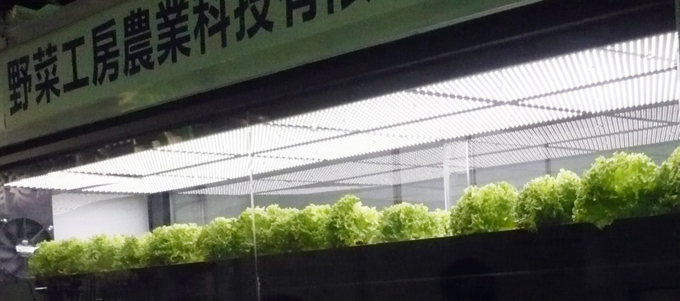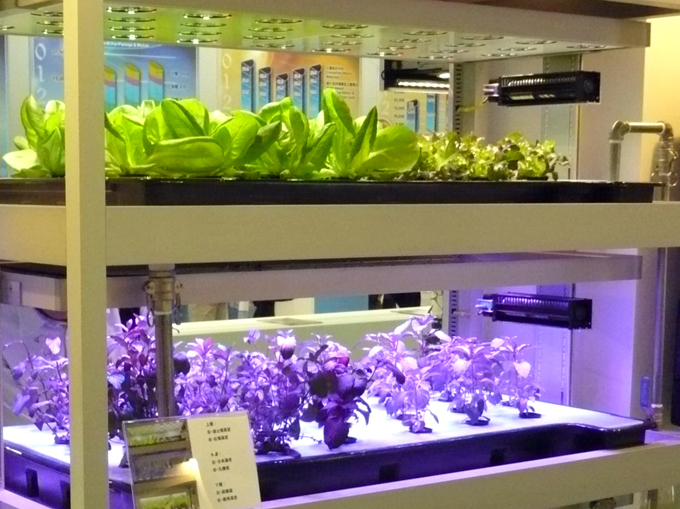Taiwan’s LED Sector Lights Promise for LED Greenhouse Makers
One maker uses solar-panels in greenhouses for northern Chinese latitudes
2012/10/23 | By Ken LiuFor the first time, “LED greenhouse” was chosen as theme at LED Lighting Taiwan 2012, staged June 19-21 in Taipei, suggesting vigorous promotion of new LED applications by Taiwan’s government and industries to tap the emerging segment.
Director Wei Fang of the National Taiwan University’s Department of Bio-Industrial Mechatronics Engineering, a specialist in greenhouse horticulture, defines the “new” concept as growing vegetation year-round under artificially-controlled environment. LED greenhouse is the hot topic not just for growing worldwide awareness of food shortage but lower installation cost, to which LED is crucial. Such greenhouse used to be theoretically workable but not economical due to high installation cost associated with low-efficiency yet pricy LEDs, hence the relatively low interest, Fang says.
The game changer is LED for its red and blue chips produce the optimal wavelengths for photosynthesis, with blue, red and green chips being able to be mixed to produce wavelengths for almost every plant to outperform other light sources. Industry executives say that most plants grow well under 430nm to 660nm light.
The government-backed Industrial Technology Research Institute (ITRI) has cooperated over the past two years with the island’s LED and agricultural industries to set up the Taiwan Plant Factory Industry Development Association and Agricultural, Fishing and Livestock Association to build agricultural applications of LEDs, with each boasting over 40 members.

ArchEnergy Technology
ArchEnergy Technology Holdings Group Ltd., held by precision mold parts maker Gallant Precision Machining Co., Ltd., makes such greenhouses with energy-efficient solar panels, supplying LED grow boxes for households and greenhouses for farms. The company has also begun operating greenhouse farms to cultivate profitable Chinese herbs and flowers.
According to chairman and chief executive officer, Jack Wu, the company’s greenhouses have integrated production, meaning they handle seed incubating and planting to harvesting and food processing. “Integrated production enables higher revenue. For instance, our cordyceps militaris greenhouses in China yield around RMB 3 million (US$476,190) in revenue per acre, or around 1,000 times that from traditional cultivation,” he reckons.
Wu says his company plans to open 20 greenhouses in Taiwan and China, having so far signed agreements to secure land for such facilities in Jiangsu, Shandong, and Shanxi Provinces, which will total 2,000 acres once all set up. “We will set up joint ventures with provincial governments, with my company holding half to 60% of each of venture.” The company’s biggest greenhouse in Taiwan is 3,300 square meters in Hsinchu County, northern Taiwan.
Wu says that the well developed LED industry is the primary advantage for Taiwan’s greenhouse sector, though installation costs remain high, which the firm is countering by developing LED horticultural lights independently.
The company also plans to apply its solar-power technology to further cut cost, also enabling such facilities in northern latitudes to generate adequate warmth and power supply in winter. “Northern China is above the 49th parallel with winter lasting almost five months, so solar energy is especially suitable for greenhouses,” stresses Wu.

Liladien Industrial
Founded in 1998 to make bathtubs, Liladien Industrial Co., Ltd. integrated ultramicro gas bubble aeration technology for Jacuzzis with LED to produce “aqua-cultural containers” in 2008, its first step into the greenhouse industry. “Our strength is ultramicro gas bubble aeration technology, which extracts oxygen from water to release ions, both of which are beneficial to people and plants,” stresses L.T. Yu, the president.
The company’s aqua-cultural equipment comes in potted plant types for educational purpose, cabinet type for households, and greenhouses for mass production. “We offer
not just equipment but greenhouse layout as well,” Wu stresses.
Liladien’s equipment is mostly used to cultivate vegetables, melons, and flowers to yield fully mature plants in 30 days and target harsh northern China and the Middle East.
Yu fears that the greenhouse industry might lose steam if manufacturers over-invest in production capacity, saturating markets due to excessive optimism,” he says.

Vegfab Agriculture
Vegfab Agriculture Technology Co., Ltd. was founded in 2010 by a team of semiconductor specialists knowledgeable about LED materials and being eco- conscious.
The company supplies greenhouses for mass production, boxes for gardening and plant grow boxes for households. The sales manager Peter Chou says the company will add desktop type grow lights to its line designed for children’s education.
The company’s line is all closed types, depending on artificially controlled ambient conditions as temperature, humidity, nutrition and lighting, and has won many patents, including the ones for vertically wall-mounted LED lights and ventilation systems for grow boxes.
Chou stresses that the company has three advantages. “First and foremost, our lamps emit five wavelengths to simulate sunlight. Next, we set total light output at 10,000-12,000 lux and keep lamps 30 centimeters from plants, achieving optimal brightness and incidental distance. And we are experienced in installation with at least five mass-production lines,” Chou says.
The company boasts relatively low installation cost—NT$4.5 million (US$155,000) for a house with 630 square meters of cultivation, around 15% lower than that for its first-generation greenhouse. Output efficiency is pretty high: 3,750 units of brassica chinensis, for instance, harvested daily. Its greenhouse handles over 60 types of vegetables. Our environmental settings ensure that plants can be harvested in seven to 10 days,” Chou stresses.
Vegfab, mainly targeting Taiwan and China, has developed greenhouses particularly for cultivating zero-insecticide leafy vegetables, which it says are heavily polluted by insecticides. Chou says the company has grown in such greenhouses vegetables and plants out of season.

Nano Bio Light Technology
Nano Bio Light Technology Co., Ltd. has worked with local academic institutes for over 10 years to research LED applications for horticulture, according to Sophia Su, the sales director. Over the past decade, the company has published 10 papers on such applications. “We’ve gained valuable data from our research to find optimal solutions. For instance, we have the best light quality for LED-lit horticultural equipment,” Su stresses.
The company’s LED-lit horticultural equipment comes in types for research, households, store demonstrations, condo blocks, and mass production. “Community greenhouse is a unique idea in this industry. We have worked with construction companies to install the equipment in new projects to inspire residents to grow insecticide-free vegetables and fruits, which they can consume or sell,” Su notes.
Su says promoting plant growing equipment at community level allows consumers to enjoy such harvestable culture. The company has worked with Pacific Construction Co., Ltd. to promote greenhouses in a newly completed community in Wenshan District, Taipei City.
The company’s equipment also suits growing flowers, grass and Chinese herbs, having so far installed at least 10 professional greenhouses across the island.

